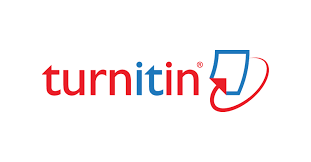CODE-MIXING USAGE IN FATHIA IZZATI’S YOUTUBE CHANNEL VIDEO
DOI:
https://doi.org/10.32493/ljlal.v5i2.30517Keywords:
code-mixing, sociolinguistics, qualitative designAbstract
Sociolinguistics considers code mixing as an important area of study, particularly as a sign of bilingualism, where individuals use more than one language. Code-mixing transpires when individuals integrate different languages in their speech or sentences. The objective of this investigation is to recognize the varieties and motivations behind code-mixing as evidenced in a YouTube video by Fathia Izzati. The study employs a descriptive qualitative approach to showcase the findings derived from the analysis of the data. In order to classify the forms of code-mixing, specifically intra-sentential, intra-lexical, and those involving a shift in pronunciation, the researchers utilize Hoffman's theory. The subject data consists of Fathia Izzati's utterances in a video titled "Realistically set & reach your goals" on her YouTube channel. The researchers discovered that the most frequently used type of code-mixing was inter-sentential code-mixing, accounting for 96% of the instances, and discussing a specific topic was the most common reason, representing 44% of the occurrences in the video. The implications of this study are presented in the form of an article, aiming to contribute new insights into the types and reasons for code-mixing usage.
References
Astri, Z., & Fian, A. (2020). The Sociolinguistics Study on the Use of Code Mixing In Gita Savitri Devi’s Youtube Channel Video. SELTICS, 83–92. https://doi.org/10.46918/SELTICS.V0I0.728
Dughera, L. (2020). A Literature Review of the YouTube Phenomenon and the Teaching and Learning Practices.
Faraj, S. J. (2018). Code Switching and Code Mixing. Journal of University of Human Development, 4(4), 86. https://doi.org/10.21928/juhd.v4n4y2018.pp86-97
Girsang, M. L. (2015). An Analysis of Code Switching and Code Mixing as Found in Television Advertisement. Code Mixing and Code Switching Study, VII, 50–64.
Hoffmann, C. (2014). Introduction to Bilingualism. Taylor & Francis. https://books.google.co.id/books?id=MVqgBAAAQBAJ
Holmes, J. (2013). An Introduction to Sociolinguistics. Taylor & Francis. https://books.google.co.id/books?id=AWXfAQAAQBAJ
Hutabarat, I., & Khalisa, L. (2020). Code Mixing Used By Teenagers in Facebook. Jurnal Littera: Fakultas Sastra Darma Agung, 1(1), 9–18.
Istiara, F., Hastomo, T., Febriansyah, M. H., Larasati, D., Pgri, S., & Lampung, B. (2022). An Analysis of Using Code-Mixing on Podcast “Guruku Mr. D†Youtube Channel. Ksatra: Jurnal Kajian Bahasa Dan Sastra, 4(1), 113–122. https://doi.org/10.52217/KSATRA.V4I1.618
Marasigan, E. (1983). Code-switching and Code-mixing in Multilingual Societies. Singapore University Press. https://books.google.co.id/books?id=09VhAAAAMAAJ
Meechan, M., & Poplack, S. (1995). Orphan categories in bilingual discourse: Adjectivization strategies in Wolof-French and Fongbe-French. Language Variation and Change, 7(2), 169–194. https://doi.org/DOI: 10.1017/S0954394500000971
Nababan, P. W. J. (1984). Sosiolinguistik: suatu pengantar. Gramedia. https://books.google.co.id/books?id=JAo6AAAAMAAJ
Putri, K. R. D., Utami, N. M. V., & Ariyaningsih, N. N. D. (2022). Code Switching And Code Mixing Found In The Shallow Stuff’s Utterance. Lingual: Journal of Language and Culture, 13(1), 34. https://doi.org/10.24843/ljlc.2022.v13.i01.p04
Richards, J. C. (2002). Theories of teaching in language learning. Methodology in Language Teaching : An Anthology of Current Practice, 10–30.
Thara, S., & Poornachandran, P. (2018). Code-Mixing: A Brief Survey. 2018 International Conference on Advances in Computing, Communications and Informatics, ICACCI 2018, 2382–2388. https://doi.org/10.1109/ICACCI.2018.8554413
Wardhaugh, R. (2011). An Introduction to Sociolinguistics. Wiley. https://books.google.co.id/books?id=fVhXbK_kFVYC
Wibowo, A. I., Yuniasih, I., & Nelfianti, F. (2017). Analysis of Types Code Switching and Code Mixing by the Sixth President of Republic Indonesia’s Speech at the National of Independence Day. Progressive; Journals of Linguistics, Literature, and Teaching, 12(2), 77–86.







